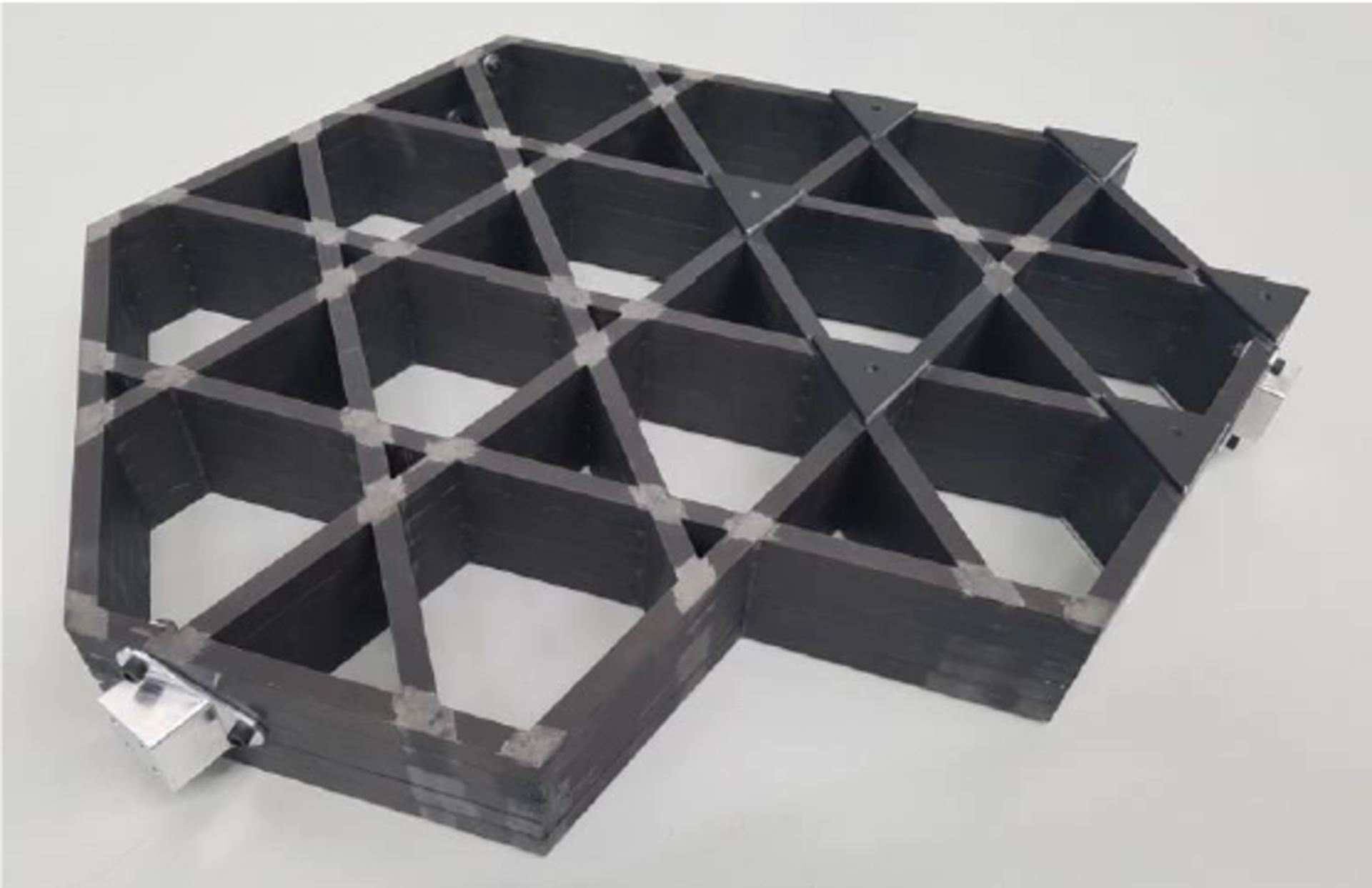Lattices of carbon fibre reinforced plastic
Telescopes and other optical instruments need a very stable structure, especially when exposed to the large variation of temperature in some orbits, since if you change the geometry of the telescope you will degrade the performance. These instruments need to have a very stable and lightweight structure that can be built in an atutomatic way.
Metals expand and constrict in warmer or colder variations which means they aren't a suitable material for these instruments. But carbon-fibre-reinforced-plastics (CFRP) are built by orienting fibres of carbon in a plastic matrix to achieve a structure that does not change size or shape with temperature. With the proper orientation of fibers and plastic matrix, you can design structures that do not change or their changes are minmal.
With the increasing maturity of composite materials and more automated production processes, lightweight grid structures built using CFRP are becoming ever more attractive for space applications.
Currently, space applications focus on using these materials in cylindrical structures manufactured with a filament winding process. But ESA has identified that CFRP materials could make a composite grid that could be a suitable candidate for a dimensionally stable structure for optical instrument benches for space missions, such as in telescopes.
Telescopes and optical instruments need a very stable structure, even in the large variation of temperatures experienced in some orbits, since if you change the geometry of the telescope you will degrade the performance. Metals expand and constrict in warmer or colder extremes but by orienting fibres in a certain way and with a specific plastic matrix CFRP’s have the benefit that a structure built using them does not change size or shape with temperature.
This is now at Technology Readiness Level (TRL) 2 but a new activity with the Technology Development Element (TDE) and the Netherlands Aerospace Centre (NLR), has manufactured and tested a demonstration model, bringing it up to TRL 4.
The activity was divided into three phases. In the first phase a technology survey identified the most promising materials and manufacturing processes. This stage also defined a high stability bench demonstrator, based on the Sentinel 5P bench (a very thick, 110mm metallic sandwich) but re-designed for a CFRP grid.
In the second phase a preliminary design was made and a detailed test plan developed to verify if the final design met the stability requirements for multiple load cases. The activity used an automated digital auto tape laying process to build the grid, which used a novel design with repeating features and splitting the fibre tows at any corners to avoid any change in thickness.
Finally, during the third phase, the grid was manufactured, inspected and tested to generate experimental required data to compare with the modelled data for predicted stiffness – the two correlated to within 8%. The final model achieved a mass of 15kg for the grid panel compared to the 25kg for the mass target (using the original metallic sandwich).
Overall, the activity demonstrates that carbon-fibre-reinforced-plastic based grid structures are a good solution for stable structure requirements.
T720-303MS closed in September 2020. Documents are available on the TEC DMS.


